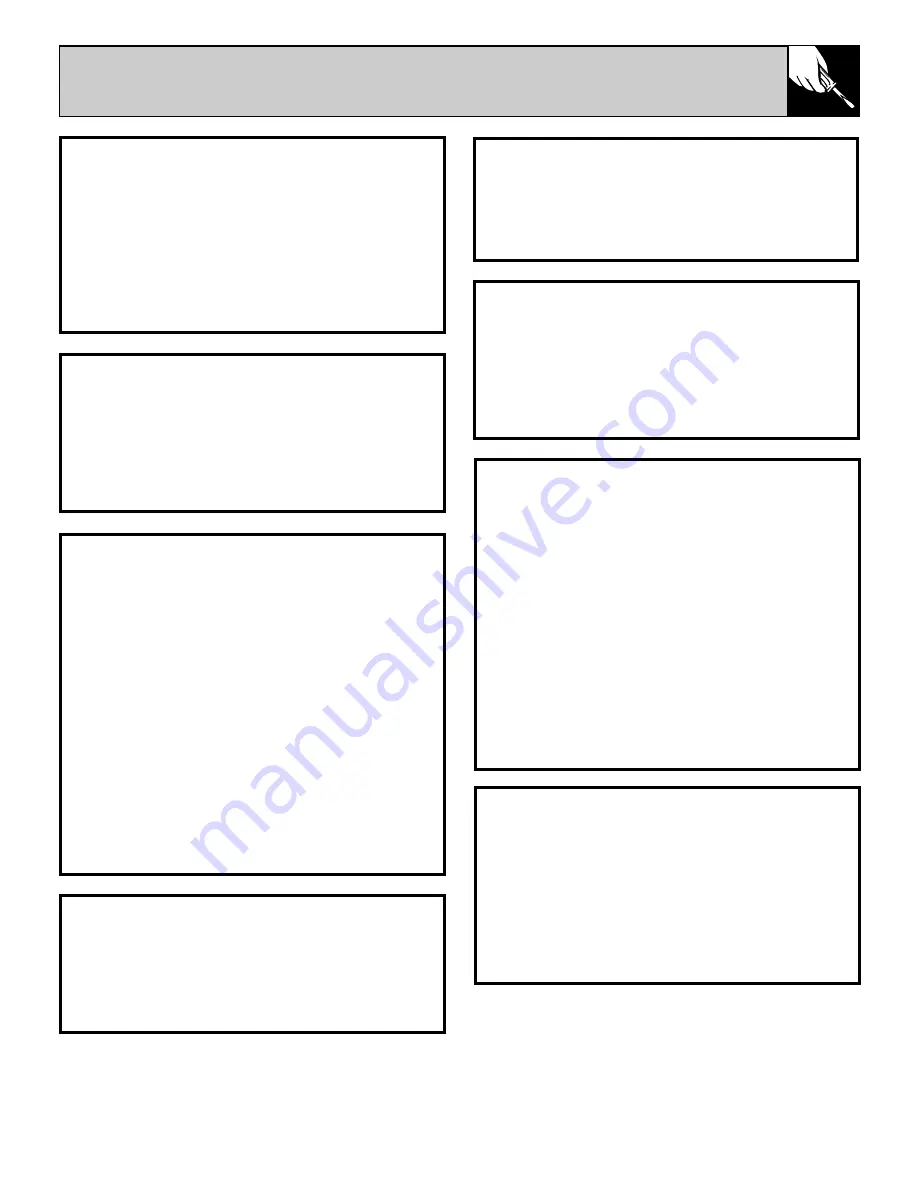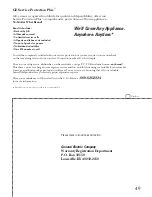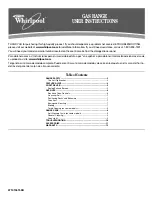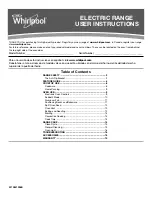
35
GENERAL
• See Dimensions and Clearances in this section
for all rough-in and spacing dimensions. These
dimensions must be met for safe use of your range.
The location of the electrical outlet and pipe opening
(see Gas Pipe and Electric Outlet Locations) may
be adjusted to meet specific requirements.
• The range may be placed with 0
″
clearance
(flush) at the back wall and side walls of the range.
LOCATION
Do not locate the range where it may be subject
to strong drafts. Any openings in the floor or wall
behind the range should be sealed. Make sure
the openings around the base of the range that
supply fresh air for combustion and ventilation
are not obstructed by carpeting or woodwork.
PROTECT YOUR FLOOR
Your range, like many other household items, is
heavy and can settle into soft floor coverings
such as cushioned vinyl or carpeting. Use care
when moving the range on this type of flooring.
It is recommended that the following simple and
inexpensive instructions be followed to protect
your floor.
The range should be installed on a sheet of
plywood (or similar material).
When the floor
covering ends at the front of the range,
the area
that the range will rest on should be built up
with plywood to the same level or higher than
the floor covering. This will allow the range to be
moved for cleaning or servicing. Also, make sure
your floor covering will withstand 180°F. (See
the Important Safety Instructions section of the
Installation Instructions.)
KITCHEN CABINETS
Make sure the wall coverings around your range
can withstand the heat generated (up to 200°F.)
by the range. (See the Important Safety
Instructions Section of the Installation
Instructions.)
MODEL AND SERIAL NUMBER LOCATION
Depending on your range, you’ll find the model
and serial numbers on a label on the front frame
of the range, behind the storage drawer or
kick panel.
TOOLS YOU WILL NEED
• Phillips and flat-blade screwdrivers
• Pencil and ruler
• Two pipe wrenches (one for backup)
• 1
3
⁄
8
″
open-end or adjustable wrench
• Nut drivers or wrenches: 3/16
″
and 1/4
″
ADDITIONAL MATERIALS YOU MAY NEED
• Gas line shut-off valve
• Pipe joint sealant or UL-approved pipe thread
tape with Teflon* that resists action of natural
and LP gases
• Flexible metal appliance connector (1/2
″
I.D.)
A 5-foot length is recommended for ease of
installation but other lengths are acceptable.
Never use an old connector when installing a
new range.
• Flare union adapter for connection to gas
supply line (3/4
″
or 1/2
″
NPT x 1/2
″
I.D.)
• Flare union adapter for connection to pressure
regulator on range (1/2
″
NPT x 1/2
″
I.D.)
*Teflon: Registered trademark of DuPont
PREPARATION
• Remove all tape and packaging. Lift up the
cooktop (on models with standard twin burners)
and remove any packing material under it. Make
sure the standard twin burners are properly
seated and level.
• Take the accessory pack out of the oven.
• Check to be sure that no range parts have
come loose during shipping.
(continued next page)
Summary of Contents for EGR2000
Page 44: ...44 NOTES...
Page 45: ...45 NOTES...
















































